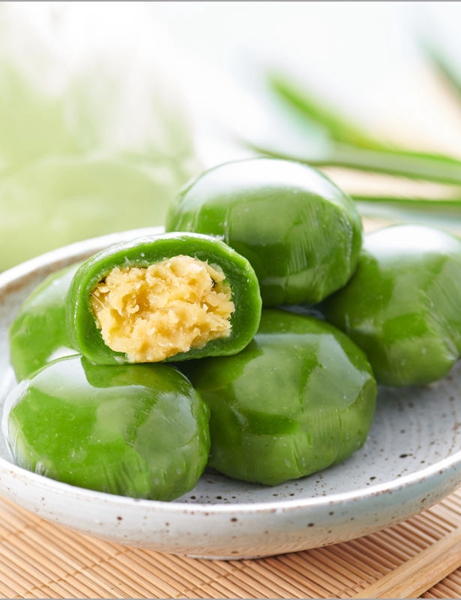A sweet treat in spring
By Xing Yi | China Daily | Updated: 2020-03-27 08:20

This year, Xing Hua Lou has introduced new savory options such as sliced chicken with bacon and beef with cheese. Other shops like Shen Da Cheng are selling a milk and mocha-flavored qingtuan which resembles the Japanese dessert mochi, while Ningbo Tangtuan has released a version with durian paste.
According to Li, the paste is made by mixing butter with durians imported from Malaysia, a country renowned for its production of the fruit.
Despite its pungent smell, the durian snack has proved to be popular among customers, accounting for one-third of the shop's total qingtuan sales.
Although stores usually sell qingtuan that are refrigerated or stored at room temperature, Sun Wenji, who grew up in Suzhou, Jiangsu province, says freshly steamed ones taste the best.
"Qingtuan is best eaten hot. This is when you can smell the refreshing aroma of the reed," Sun says.
Despite its popularity in the Yangtze River Delta, qingtuan has yet to become a national snack like the zongzi, which is consumed during the Dragon Boat Festival in summer, or the mooncake, which is staple during the Mid-Autumn Festival.
As such, Sun has had to settle for refrigerated options that she buys online as the snack is difficult to find in Beijing where she currently works.
"I really miss the qingtuan from home," she says. "But I guess having a cold qingtuan is better than nothing."
























